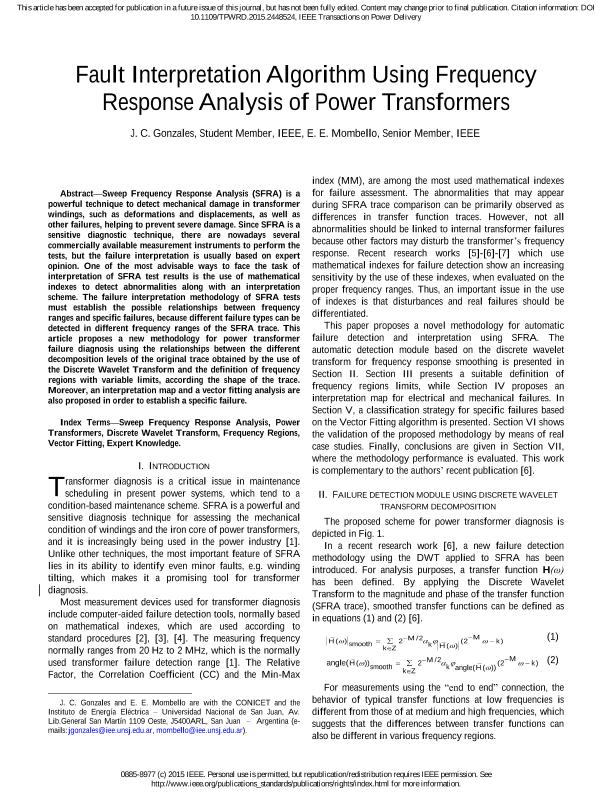Artículo
Fault Interpretation Algorithm Using Frequency-Response Analysis of Power Transformers
Fecha de publicación:
06/2016
Editorial:
Institute of Electrical and Electronics Engineers
Revista:
IEEE Transactions on Power Delivery
ISSN:
0885-8977
Idioma:
Inglés
Tipo de recurso:
Artículo publicado
Clasificación temática:
Resumen
Sweep frequency-response analysis (SFRA) is a powerful technique to detect mechanical damage in transformer windings, such as deformations and displacements, as well as other failures, helping to prevent severe damage. Since SFRA is a sensitive diagnostic technique, there are these days several commercially available measurement instruments to perform the tests, but the failure interpretation is usually based on expert opinion. One of the most advisable ways to face the task of interpretation of SFRA test results is the use of mathematical indices to detect abnormalities along with an interpretation scheme. The failure interpretation methodology of SFRA tests must establish the possible relationships between frequency ranges and specific failures, because different failure types can be detected in different frequency ranges of the SFRA trace. This paper proposes a new methodology for power transformer failure diagnosis using the relationships between the different decomposition levels of the original trace obtained with the use of the discrete wavelet transform and the definition of frequency regions with variable limits, according to the shape of the trace. Moreover, an interpretation map and a vector fitting analysis are also proposed in order to establish a specific failure.
Archivos asociados
Licencia
Identificadores
Colecciones
Articulos(CCT - SAN JUAN)
Articulos de CENTRO CIENTIFICO TECNOLOGICO CONICET - SAN JUAN
Articulos de CENTRO CIENTIFICO TECNOLOGICO CONICET - SAN JUAN
Citación
Gonzales Arispe, Jimmy Cesar; Mombello, Enrique Esteban; Fault Interpretation Algorithm Using Frequency-Response Analysis of Power Transformers; Institute of Electrical and Electronics Engineers; IEEE Transactions on Power Delivery; 31; 3; 6-2016; 1034-1042
Compartir
Altmétricas




